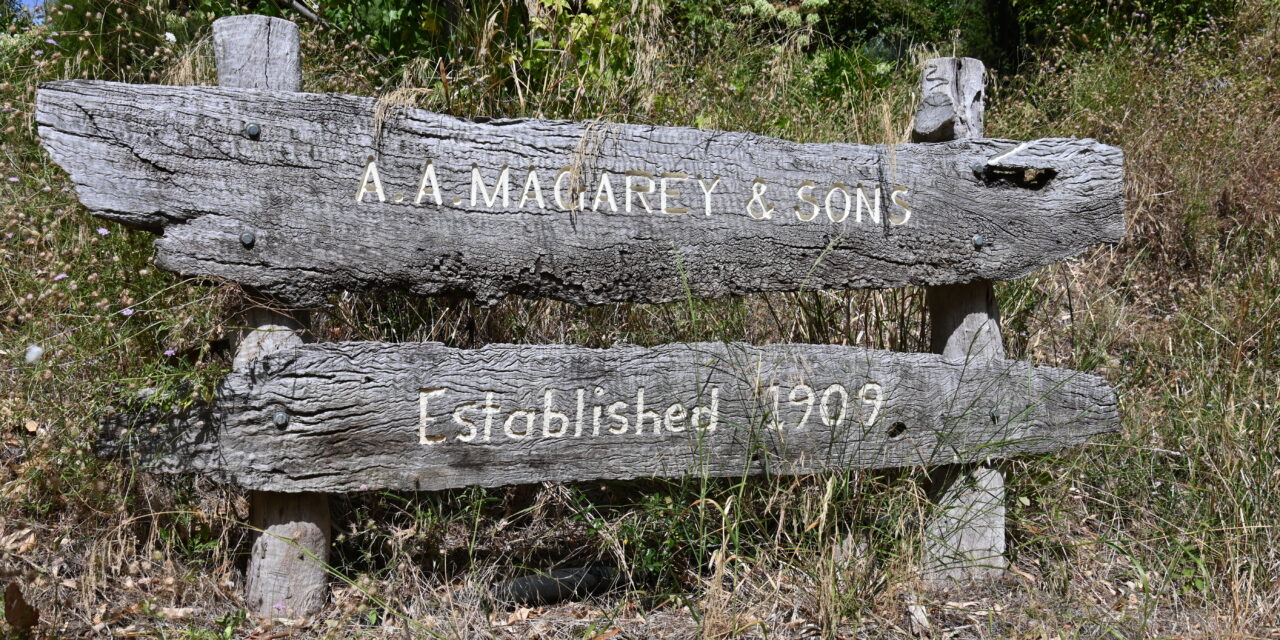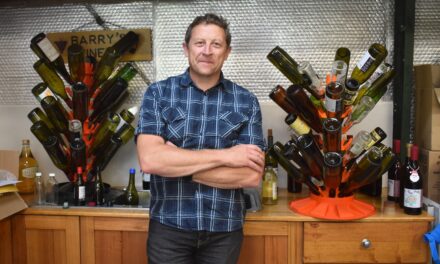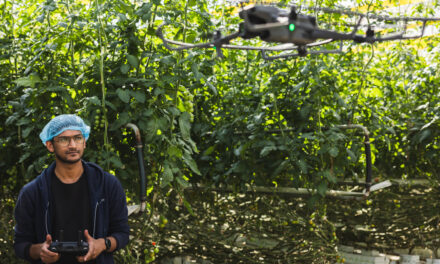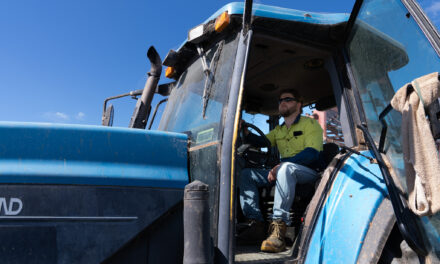A favouring microclimate and generational grit have seen a determined farm beat back a history of water scarcity, bankruptcy, arson, refrigeration, the token flood and two world wars. ANDY WILSON has the story.
The Magarey family orchard in Adelaide’s Coromandel Valley south of the city’s inner suburbs watched the natural attrition of smaller farms over the years while steadying its own ship across four generations to become a local pear-growing institution hidden within the now semi-rural suburb.
The Sturt River runs through Coromandel Valley and past the orchard, lined on either side by a ‘linear park’, a South Australian quirk given to preserving embankments of the very few streams that Adelaide has.
‘River’ also seems an honorary embellishment by eastern state standards: I cross the Sturt River in three strides without getting a foot wet.
Amid the noises of traffic and a nearby school, heat, residences and more heat, a wall of white netting appears, and the rows of pear trees underneath it march uphill.
John Magarey runs the orchard with his brother Andrew in an ongoing journey which their great-grandfather started in his older age, and the history since then has been one of hard work, financial challenges through the Depression, two wars (almost a third) and ongoing learning.
I catch the orchard at its busiest time of the year, with the staff of about a dozen breaking for lunch, the eclectic group all chatty with two dogs at their feet and the obligatory French backpacker (every orchard has one) the chattiest.
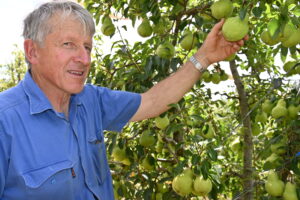
John Magarey inspects some Packham pears which ready for harvest. John said the unique microclimate of the valley gave the orchard’s pears a slight advantage over competitors east of Adelaide. “That, and the alkaline soils,” he said.
John Magarey is generous with his time, introduces every picker we pass with a brief anecdote about them and gives me a recap of the previous century-and-a-half of the family’s transition to the valley.
Amid this and the still, hot air of Adelaide’s final day of summer, the long-accumulated wisdom is expressed humbly and pragmatically — John Magarey is wise enough to know that there is always more to learn.
The light under this bushel is bright when it gets a peek, and the history is rich.
John’s great-great-grandfather began the adventure a mere nine years after Adelaide’s founding, having come from Ireland via Manchester where he learnt flour milling, and through New Zealand where an anecdote of him dodging a catastrophe with the locals turned his path towards South Australia.
Thomas was an enterprising renaissance man, succeeding as a baker and farmer, before serving in both houses of the SA parliament and spending his later years as an amateur astronomer.
“My great-grandfather (referred to as ‘T.C.A.’ by his descendants) was one of Thomas’ many children who then managed the mill,” John continues the story.
“But he developed tuberculosis and so moved to nearby Blackwood to escape the city smoke, then thought of getting an orchard, bought this place in 1909 and set to work.”
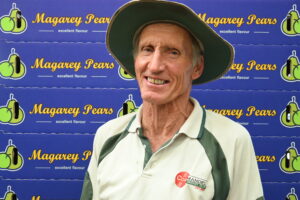
Andrew Magarey said specialty fruit shops were the orchard’s main market. “The shopkeepers say the Victorian fruit is not as high quality as our fruit, he said.
T.C.A. Magarey spent the first years blasting rock from the site and building the foundations of one of numerous local orchards.
Two of his sons took over the property towards the end of T.C.A.’s life, but World War I beckoned, fortunately drawing only one of the brothers to Europe — and home again.
T.C.A. had come with money, but by the time Alec took over life was getting financially difficult on the orchard.
John’s grandfather Alec now had a property on his hands with greater value due to much investment into it, which led to the next challenge which was a normal occurrence for the times: buying out his siblings.
“He ended up paying more than he should have and then got into the situation that they couldn’t handle the payments,” John said.
“Things were pretty tight during the Depression and my grandfather even put the farm up for sale, but no-one bought it, so the bank said ‘just keep going’.”
At that time the property grew apples for South African exports and the family took the advice from experts on what varieties would sell.
The invention of refrigeration was a game-changer with some apple varieties no longer suitable, forcing the family to grow those which refrigerated better.
The next opportunity for exporting came with a local cooperative starting up, which then burnt down.
“Probably deliberate,” there is more than a hint of conviction in John’s voice.
Although a second cooperative was built, the cold stores were not managed well.
“The manager seemed to favour some growers in terms of colder rooms, and our fruit got to Port Adelaide but then got rejected for being too warm,” he said.
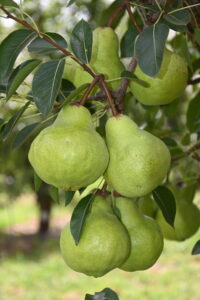
In addition to eleven types of pear, the orchard boasts five apple and fifteen plum varieties.
“My grandfather went to Prince Alfred’s College and Roseworthy (Agricultural College) to learn what he needed to learn, but basically, we were still just English farmers trying to work out how to grow horticulture in Australia,” John said.
“Which basically is what we are still trying to do.
“We do not operate on a large scale, so we have to make work what works on a small scale.
“People would laugh at our size, but you can’t just push a button and everything is fertilised, because there are so many different soil types.”
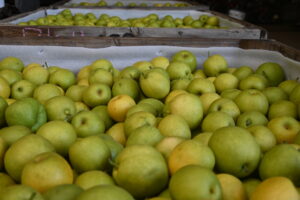
Nashi pears were planted in the 1970s and 1980s. The variety requires regular thinning in the orchard and is graded in the packing shed by hand due to the risk of conveyor belts on the grading machines damaging them. “They can take a bit of work,” said John.
Another war and another generation joined the services.
“Many businesses whose sons went off to the Second World War did poorly compared to others who did well because their boys stayed home,” John said.
“My uncle and father (David) came back to see the trees had not been pruned for five years, so they had to really rebuild the place and changed direction by planting up a lot of peach trees, considering it to be a relatively faster tree to grow.”
South Australia’s worst natural disaster then hit in the 1956 flood and the peach trees died from waterlogged roots.
The year 1966 saw the decision to not only build their own cold store, but also to not rely on the temperamental export market and focus on the domestic market.
“With our own cold rooms, we had a bit more control.”
When John and Andrew’s generation came, no war beckoned (Andrew’s marble fell for Vietnam, but Whitlam soon ended that), however the lure of university education, encouraged by their mother, saw the departure of all five Magarey siblings from the farm.
“Four of us studied agriculture, and one engineering,” John said.
“You might think that’s a poor reflection of our imagination, but we figured it was necessary.”
Two brothers went even further away, becoming plant pathologists.
The trees were neglected again.
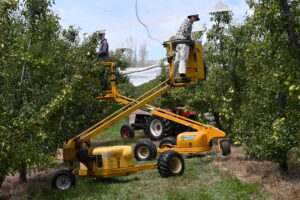
Despite the enthusiasm and efficiency of the orchard’s pickers, Andrew Magarey said the difficulties of finding staff was widespread across the industry.
“The apples did not work out so well, and had we focused on them we would not have had the advantage over the (competing) Lenswood orchards.”
Enter the pears, with John saying the orchard’s ‘real wisdom’ came with making the fruit its main crop.
“This was the basis of the change in the business; the focus on pears was a significant thing.”
A tour of the orchard shows the coming together of the evolving experience since then, and the nashi pear handed to me is the freshest and largest I have ever eaten.
The characteristic V-shape of the Tatura trellising was a key development in 1984 and the resulting strong tree architecture rivals any that can be found in Victoria’s Goulburn Valley.
Given South Australia’s notorious lack of water, John said early planning saw the sinking of bores with post-war settlement money from his father and uncle.
“We now irrigate from them and that has been quite a saving grace for us.”
Andrew’s account of an original water race from the uphill bores developing over time from rudimentary flood irrigation to steel pipes and up to the current sprinkler system shows that if this family has not yet perfected their craft, they are very close.
Ploughing after rain was a pre-irrigation method used for weed control but broke down the soil’s structure.
“Back then it was either bulldust or mud, but then we regrew sods and the soil regained its structure as it regained organic matter,” Andrew said.
“And there’s a lot to be said for the invention of polythene — that changed things so much as well.”
The decision to replant Josephine pears — which act as pollinators for the other varieties — more randomly was undertaken to improve proximity-based yield of those varieties over the ease of harvesting Josephines in a single row.
The Australian-bred Packham pear then became the orchard’s mainstay.
John also attributes the local climate as an advantage.
“We have quite a microclimate here in Coromandel Valley which is a bit warmer than the Adelaide Hills where our competitors are,” he said.
“It’s not so damp here in the spring, which makes it better for the pears and gives them a lighter colour and makes them more attractive.
“I think that, and the alkaline soils, work quite well in our favour.
“Planting pears was a good decision for us.”
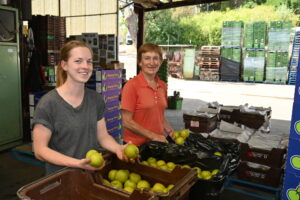
Elsje Magarey is the fifth generation of Magarey to be working the family orchard and has taken a break from speech pathology to help out with the harvest. Jan Tregenza has retired from teaching and gives a couple of days a week to help with grading.
The 10 conveyor belts of the large grader stood silent when Small Farms visited.
John’s daughter Elsje and family friend Jan Tregenza were hand-grading nashis from a bin.
“This is quiet,” Elsje said, which beckoned the question of when the season might be at its peak.
“Oh, you’re in it, it’s just quiet now,” she said.
“We’re picking Packhams, plums are coming up and then apples will be knocking at the door.”
Jan said when in full flight, the packing shed was driven by everyone listening to the conveyor belts.
“You have to listen to the machines to make sure the machines are running well; you’re always listening.
“And we don’t do the nashis on the belts because the nashis get beaten up too much.”
Elsje is having a break from her career as speech pathologist and social worker to help on the orchard and as well as grading, she works the phones every Monday morning contacting shop owners and runs the business’ social media platforms.
Hail in 2010 resulted in a lighter crop which coincided with investing in newer grading machinery.
In 2011, SPC and other canneries downscaled their production which resulted in Goulburn Valley fruit flooding the SA market.
“So we have had to learn to live with the competition after SPC,” Andrew said.
“But we have always aimed for the specialty fruit shops to be our market because the shopkeepers say the Victorian fruit is not as high quality as our fruit.”
Elsje focuses more on the challenges of attracting labour and both her and her uncle Andrew have a good grip on the challenges of recruiting staff.
They are keen to spell out the situation.
“We need staff to pack fruit, but how do you replace the older generation who is used to working very long hours?” Elsje said.
“I mean, I feel my commitment is to the orchard but I can’t make enough to buy a house.”
Andrew said this was very common in all orchards, conceding that many members of the family had moved into other vocations.
“John and I are paid the least and we work the longest hours,” he said.
His contemplative smile suggests this economic challenge — just like the previous century’s challenges — is something they will find a way around.
Elsje also targets the attitudes of buyers.
“Pears are almost the cheapest line in any fruit and veg shop,” she said.
“We try to get good money for our pears but the days of spending good money to get good quality fruit, are they over now?”
Her uncle is more upbeat.
“I don’t think they are; so many people you talk to say: ‘I can’t find a good piece of fruit to eat’,” he said.
Variety choice plays a big part in knowing what the market wants for all the farm’s fruits, and the timing of when to pick pre-ripeness maximises shelf life.
This is where the brothers continue to seek variety improvement, and Andrew explains the timing of plum harvests as an example.
“Take Mariposa plums; they rapidly go from unripe and sour to today, when they are just great, but in two days time they are over-ripe, and we can no longer find time to be feeling all the individual plums for softness.
“So we need to carefully choose the varieties that we grow to get this timing right.”
John has a comprehensive understanding of the diversity of small business in country areas because, as he says, ‘those businesses are the country’ and cites the obligatory need for beekeepers for pollination as an example of supporting another business.
These themes combine to make a quite principled approach to buying fruit, and John is possibly a quiet spearhead of the public sentiment toward the supermarket duopoly buying cheaper imported fruit, but he leads possibly a naïve army.
“The customers don’t realise what they are losing by buying the cheaper stuff, and by selling to multinationals, you take with it a farmer’s control of the market, putting the industry in the hands of those who are not industry-focused,” John said.
“Australians have lost the ability to make the choices that are in their best interests.”
These are wise men and women who have built their home upon the rock, and although no rain has come tumbling down, the family’s strong Christian faith shines most through their anecdotes and gratitude for what they have.
They don’t hold back, with Andrew adding that the family has continually ignored any offers of selling up, despite the farm being the last rural island in a classy suburb, and does so on the principle that this land was given to them.
“We have been granted this land, it is ours and yes we are its stewards.
“We’ve been blessed.”
John applies, perhaps without realising, the biblical notion of not looking back once the hand is on the plough.
“The message of the story is not looking back at what grandfather did, but look to the progress of society,” he said.
“What are we laying down now for the future?”
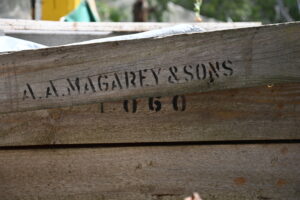
The Magarey orchard has given attention over the years to improving growing methods, adapting to market changes and changing fruit varieties.
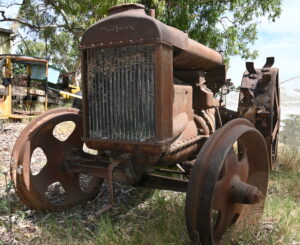
A 1920s Fordson tractor acquired by the Magareys from another Coromandel Valley orchard which sold out in the 1970s.

